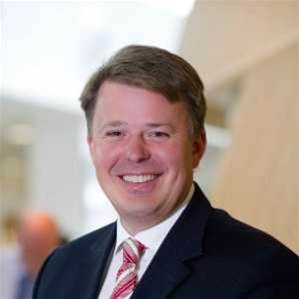It has been three months since Matt Yannopoulos left the Department of Defence to lead IT at the Department of Immigration and Border Protection.

The former defence CTO fills the role left vacant by the retirement of Tony Kwan.
Yannopoulos told iTnews that his new home is very different to the huge sprawl of Defence.
“[Immigration] has a really enthusiastic and energetic culture," he said. "It is much more about applications delivery, and less about infrastructure. Defence was very much about the scale of the place, the network and the infrastructure.”
His time so far has been transition focussed, including a week learning the tricks of the trade from his predecessor and visits to offshore posts and immigration detention centres as part of “learning the immigration business”.
He has his eyes set on 2014 – which is going to “be a big year” – to really start making his mark on the organisation.
Stabilisation
The CIO views the next three years in terms of a step-by-step journey, culminating in the opportunity to make the most of the onshore cloud services on offer in Australia.
But all strong structures must be built on a sturdy footing, so the first stage to be completed in stabilisation.
Under Kwan, the department made the unusual decision of reversing its outsourced midrange computing arrangements and bringing this functional area back in house.
For many years the then Department of Immigration and Citizenship outsourced mid-range and other infrastructure needs from CSC. But Yannopoulos agrees with Kwan that it will be cheaper - to the tune of $7 million to $8 million each year - if they do it themselves.
“The contract had been in place for quite a few years,” he said, adding that a bit more flexibility and competitive tension in this area will serve the department well.
“Our ability to deal with that change within the parameters of the legacy contract would have been difficult I suspect.
“We have taken it over and we are now going through an improvement phase.”
However, once he has infrastructure up to his standard, Yannopoulos wouldn't rule out outsourcing all over again.
“In time we will go back to market and re-ask whether this is something best done by immigration staff or whether it is best sourced as-a-service,” he said.
“But in our business, a large provider doing everything is not something we’d go back to. The trend now is multi-vendor.”
Beyond 2014 - read on for Yannopoulos' plans...
Getting ready of the cloud
All of these projects started before Yannopoulos’ time.
The coming calendar year will be an opportunity for him to start making his own mark on the organisation, and he is going to start with a comprehensive program of application upgrades covering everything from Windows server and desktop operating systems to immigration’s monitoring and management software.
He will also need to keep a close eye on the floor of parliament, as the packed reform agenda for immigration under the new government will have carry-on implications for the systems he is now responsible for.
He is already preparing for changes he might need to make to Immigration's Siebel central case management system, which logs and tracks the status of detainees and those on bridging visas, should Tony Abbott successfully pass legislation to re-introduce temporary protection visas.
Before 2014 is over, Yannopoulos wants to have commenced the third and final stage in the immigration department’s technology transformation.
“Hopefully starting from before 2015 we can to start to look at opportunities to source services at a lower cost from onshore cloud providers,” he said.
Even beyond that?
“One of the unique challenges of this place is that someone wants to apply for a visa every minute of every day. Planes are seeking to land every minute of every day. And those people need access to our systems,” Yannopoulos said.
The only way to provide this sort of 24/7 service up-time, is to “move to a bank-like system where we have no discernible outages for our clients or staff.”
“At the moment I need to take systems down for a few hours to do upgrades or patching, making them unavailable globally,” he said.
“I want to step up our infrastructure. I don’t know how much that is going to cost me, and that is one of the things we are looking at. But my intent longer term is to lease a second facility with geographic separation from the primary data centre, so we can have that high availability.”
He understands that the road ahead won’t be easy, especially when it comes to trying to get funding from an increasingly tight federal purse, but hopes that the ongoing “balance of priorities” will eventually work in his favour.



.png&h=140&w=231&c=1&s=0)
.png&h=140&w=231&c=1&s=0)





.png&w=120&c=1&s=0) EDUtech AU
EDUtech AU
.png&w=120&c=1&s=0) Security Exhibition & Conference 2025
Security Exhibition & Conference 2025
 Integrate Expo 2025
Integrate Expo 2025
 Digital As Usual Cybersecurity Roadshow: Brisbane edition
Digital As Usual Cybersecurity Roadshow: Brisbane edition
 iTnews Benchmark Security Awards 2025
iTnews Benchmark Security Awards 2025







![Fed's digital ID system coming to myGov "this [financial] year"](https://i.nextmedia.com.au/Utils/ImageResizer.ashx?n=https%3a%2f%2fi.nextmedia.com.au%2fNews%2fmygovid_app.jpg&h=271&w=480&c=1&s=1)



.jpg&h=140&w=231&c=1&s=0)



